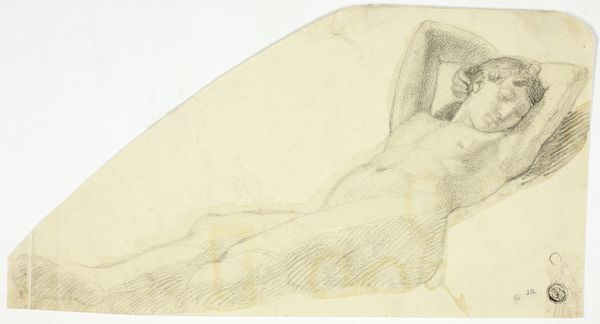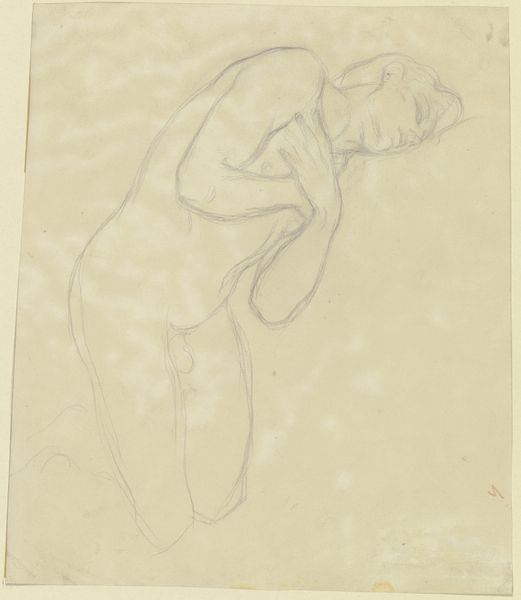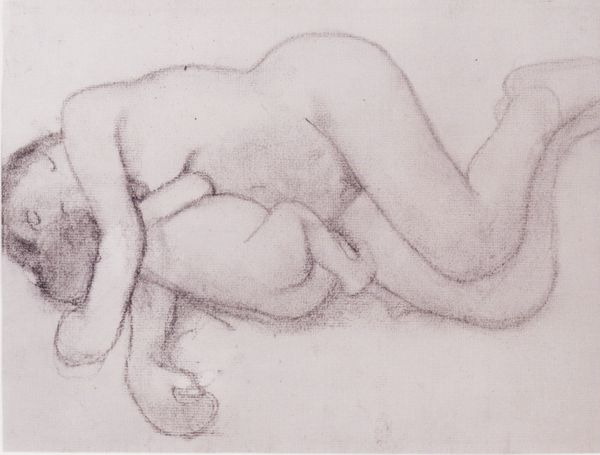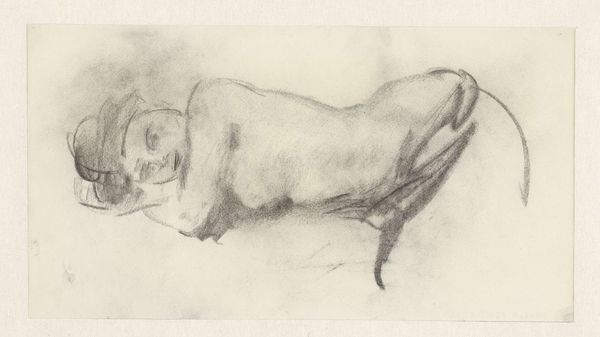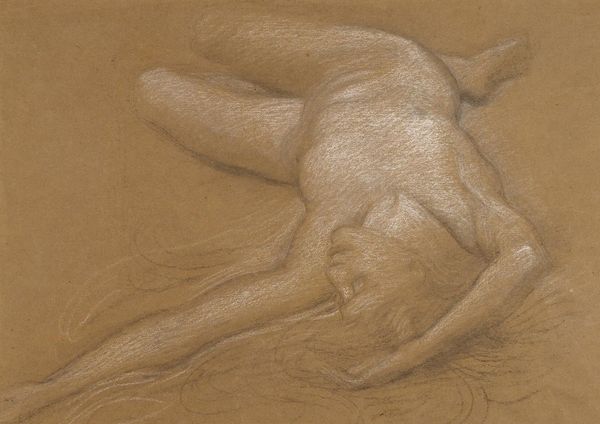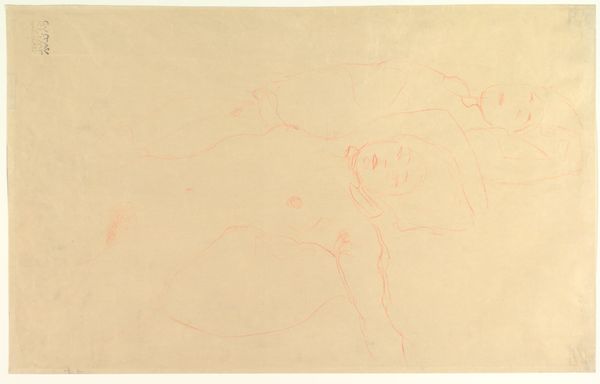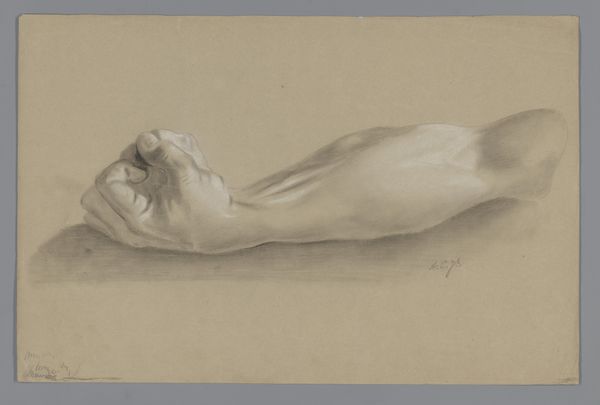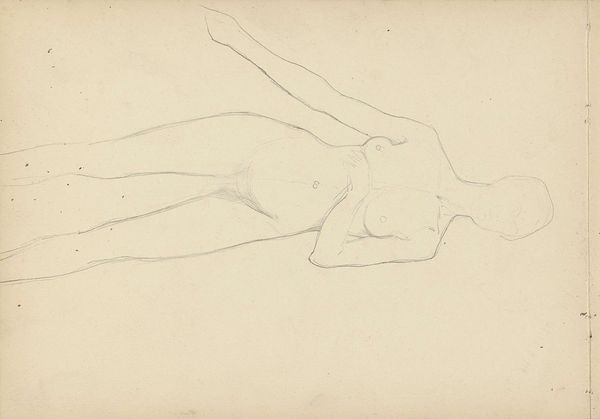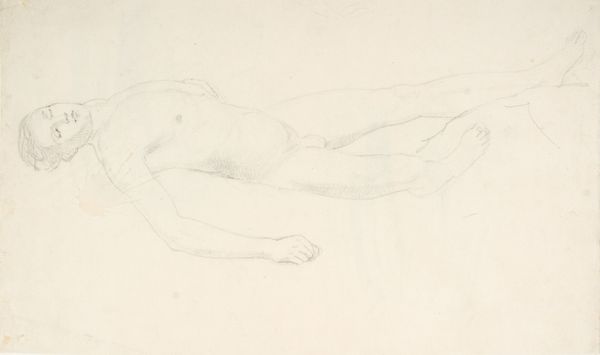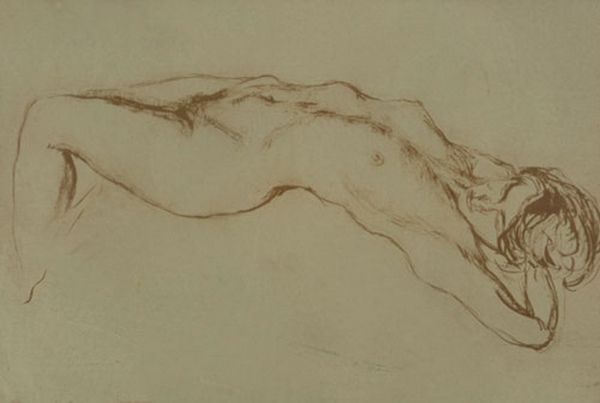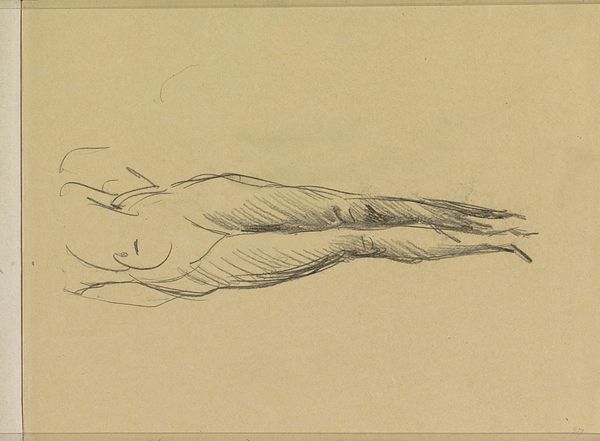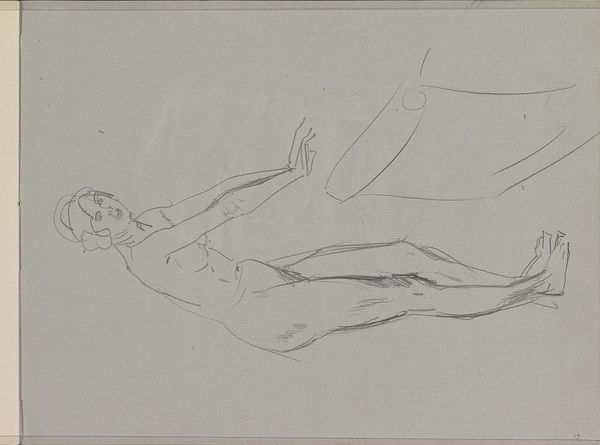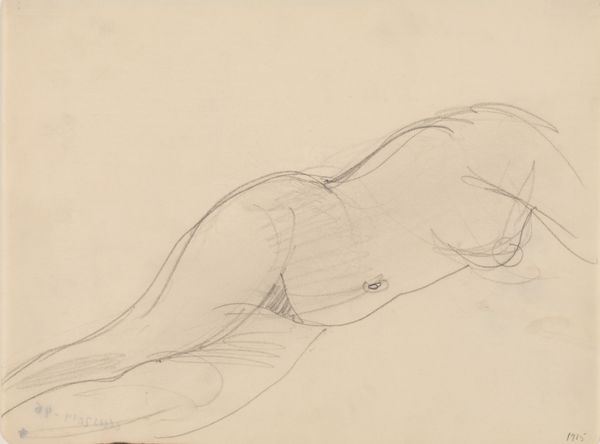
drawing, pencil
#
drawing
#
pencil sketch
#
figuration
#
pencil drawing
#
pencil
#
genre-painting
#
academic-art
#
nude
#
erotic-art
Copyright: Public domain
Editor: This is Théophile Alexandre Steinlen’s "Reclining female nude," done with pencil. The soft rendering gives it such a delicate feel. What stands out to you? Curator: What I find compelling is how the drawing underscores the relationship between the artist’s hand, the material of the pencil and paper, and the representation of the female form. The economic realities of artistic production are key here. This wasn't an oil painting destined for a salon, but a sketch, a study perhaps, born of readily available and inexpensive materials. Editor: So, you are thinking about what the limitations of the materials might have meant for Steinlen? Curator: Precisely. Pencil allows for quick studies, and multiple iterations, a crucial part of the creative labor. What paper was used, what pencils were available at the time? These factors would have constrained and enabled the artist's hand. It moves it out of the realm of "high art." Also, who would consume an artwork made of such "humble" materials? Was it meant for private viewing? Or perhaps reproduced as an illustration, democratizing access. Editor: I hadn't considered the distribution aspect and how the materials may connect with audience! Curator: Consider too how the seemingly simple act of repeatedly dragging a graphite stick across paper involves the artist’s physical body and societal gender roles that are expressed through production. This is evident from his famous posters and political illustration that shows class struggle through women, men and children. It is critical that this drawing is not observed in isolation. Editor: I see what you mean! So thinking about the materials and how art is made also shows how that artwork exists within a broader culture. Thank you. Curator: Precisely. By acknowledging these aspects, we can comprehend the cultural contexts in which Steinlen operated as an artist in the late 19th century.
Comments
No comments
Be the first to comment and join the conversation on the ultimate creative platform.
